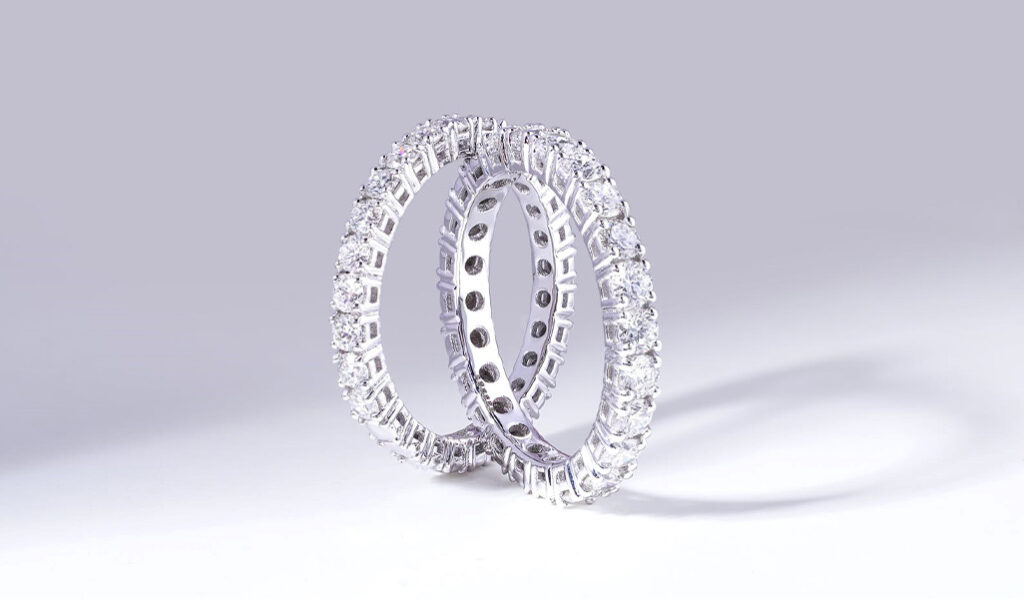How are lab-grown diamond rings going to overtake the real deal? While they might not be able to match the beauty and craftsmanship of mined diamonds, diamond simulants like moissanite and cubic zirconia are increasingly challenging mined diamonds in terms of both value and popularity. But nothing has the same brilliance or fire of a naturally-formed diamond – except for lab-grown diamonds. So how will this new technology affect the industry as we know it?
The Science Behind Lab-Grown Diamonds
But what about lab-grown diamonds? In recent years, the market for lab-grown diamonds has exploded, and it’s only getting bigger. So how are these man-made diamonds going to overtake the real deal? Lab-grown diamonds have many benefits over mined diamonds because they do not require large amounts of natural resources to produce. Lab-grown diamonds are also created in an environmentally friendly manner, free from any pollution or human rights violations associated with mining.
Lab grown also provide a choice for consumers who want ethical or conflict-free jewelry. Furthermore, synthetic diamonds do not require industrial processes like mining or polishing which can be detrimental to both people and the environment. Ultimately, the lab grown to offer consumers more options when it comes to purchasing ethically made products while still offering all of the beauty of a traditional diamond ring.
The Environmental Impact Of Lab Grown Diamonds
Lab grown diamonds have a much smaller environmental impact than mined diamonds. They require less energy and water to produce and don’t release harmful chemicals or carbon emissions into the air. lab grown diamond bracelets help reduce pollution! And because they’re produced in a controlled environment, we can be sure that every lab grown diamond is conflict-free. If you want to feel good about your purchase, opt for a lab grown diamond instead of an earth-mined one. The next time you’re looking for a ring, consider buying from a company like Diamond Forever which proudly sells only laboratory-created diamonds – there’s no need to choose between ethical and stylish when it comes to these beauties!
Because each diamond has been crafted using unique technologies, its appearance may vary slightly. That said, if you get two lab grown diamonds with identical measurements, chances are they will look very similar. With mined diamonds, however, even gems with matching carat weights may look quite different thanks to variations in color, clarity and cut. A bit of individuality is nice—it makes them unique!—but if yours doesn’t match what’s pictured online then it’s important to know upfront before your purchase so you can ensure both parties are clear on exactly what you’re getting (no matter which type of diamond.)
What Lab Grown Diamonds Can Teach Us About Natural Ones?
In terms of its life cycle analysis, a lab-grown diamond bracelet has a much smaller ecological footprint than a mined one. The total ecological footprint of a lab-grown diamond is 0.2 carats, while the total ecological footprint of a mined diamond is at least 1.5 carats. This is because growing diamonds in a lab only requires a small amount of energy and water, while mining diamonds requires significantly more energy and water. Plus, mining also results in pollution and damage to the environment. Lab grown diamonds are not just better for the environment; they’re better for your bank account too. Lab grown diamonds cost $2,000 per carat, as opposed to $4,000 per carat for natural stones. Lab grown diamonds are going to be superior to natural ones both economically and environmentally as time goes on!
Life Cycle Analysis – Total Ecological Footprint
A study done by the London School of Economics found that lab-grown diamonds have a significantly smaller ecological footprint than mined diamonds. The study looked at the entire life cycle of both types of diamonds, from mining and processing to manufacturing and transportation. They found that lab-grown diamonds have a 74% smaller ecological footprint than mined diamonds. Lab-grown diamonds take just 6 weeks to produce while mined diamonds take up to three years. Lab-grown diamond bracelets require less material than real diamond bracelets which means they can be made in a factory in any country instead of in Africa or China where most mines are located. No human rights violations occur because the laborers who work in the labs are not risking their lives in dangerous conditions and there is no need for slaves. Another benefit of lab-grown diamonds is their durability. They do not have any scratches on them because they were never touched by humans or anything else!
Is It Possible To Make Something Better Than The Best?
For years, scientists have been trying to create diamonds in a lab. And, it seems they’ve finally succeeded. Not only are these lab-grown diamonds just as good as natural diamonds, but they’re better in some ways. Here’s how lab-grown diamond rings are going to overtake the real deal lab grown diamond Pendants are more affordable and ethical than natural diamonds because they don’t cause damage to animals or the environment. They also last forever and can be sized according to your finger size, so you don’t need to get it resized every few months like a traditional diamond ring. But will lab-grown diamond bracelets be able to surpass their natural counterparts? Unlikely. A bracelet is for a woman on her arm, and women want the best when it comes to jewelry. Besides, who wants something that lasts forever when you could wear something that’s special for the rest of your life?



